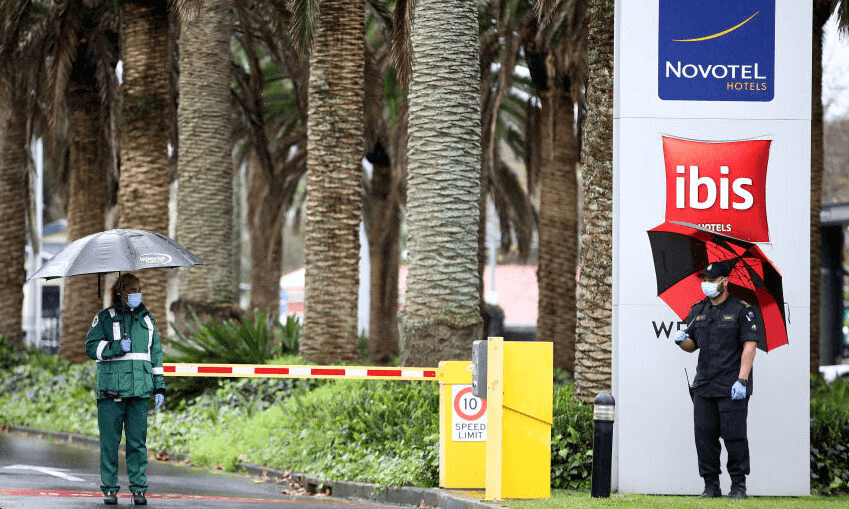The government’s review of managed isolation facilities paints a picture of an under-resourced, uncoordinated and ad hoc system. Here’s what you need to know.
What’s all this then?
Housing minister Megan Woods and defence official Air Commodore Darryn “Digby” Webb were put in charge of New Zealand’s managed isolation and quarantine facilities last week, following the emergence of a series of failures, including the revelation that people were being released from isolation for compassionate grounds without being tested.
Woods immediately announced there would be a rapid review of the system, which was carried out by Tony Millar of the New Zealand Defence Force, Andy Milne of Corrections and Kathryn Gibson of the NZ Police on June 19-20, and released today.
And?
“A consistent theme encountered was of a system under extreme stress,” says the Review of Managed Isolation and Quarantine (MIQ). While the system worked fine under alert level four, the move to level one has seen “a growing increase in demand for MIQ services”, which “is placing increasing pressures on the system”.
The review put this down to fewer staff as various agencies involved returned to business as usual, the increased demand for border entries, increased domestic travel and “the commercial imperative of hotels”.
What’s the worst of it?
The review points to a “misalignment between different agencies’ perceived responsibilities, their policies, and operational realities”. Which basically means it was all a bit of a mess. The wearing of PPE is singled out as a “particularly noticeable” example, “with different entities appearing to have different policies regarding PPE usage”. It calls for an immediate PPE policy review.
Has resourcing been an issue?
It sure has. The whole system is under-resourced and workers have been under the pump, which has led to errors. “The staff servicing the MIQ system have almost all been involved in the response for a significant period with little or no real respite. Fatigue increases the risks of error. The morale of staff at the ‘frontline’ is also challenged by the behaviours of some travellers and the need to operationalise short notice policy changes.”
The review notes there have been “some notable increases of frustration” in those arriving into managed isolation, mainly those coming from Australia who have reportedly been surprised by the 14-day isolation requirement. “There has been a consequent demand and desire for a more permanent Police presence at MIQ facilities.”
In addition, “current resourcing capacity is not sufficient to carry out forward planning, to ensure that policies are aligned, or to test the system and provide assurance that it is adhering to those policies”.
Hmm, what else?
Policy decisions have been made with “little understanding of the operational consequences”, which has increased stress for staff. The recently implemented requirements for testing on day three and day 12 of isolation put strain on the system, and delays on test results have meant people haven’t been able to leave at the expected time to free up beds for new arrivals.
How are they going to fix it?
The review calls for “a single clear lead agency” to run the facilities, along with “clear lines of accountability, protocols around inputs and information and data sharing”. In addition to this and the PPE policy review urged above, it calls for greater resourcing, and for “perceived organisational siloes between agencies” to be broken down. Lines of accountability need to be clarified, there needs to be a “comprehensive audit of policy, practice, procedure and documentation”, and greater attention paid to the transfer process of returnees.
How has the minister responded?
In a press release accompanying the release of the review, Megan Woods said, “Actions are being taken swiftly to address all the issues that this review has identified”. She said the review found “the system is not broken”, but does need “additional resourcing to respond to the increasing demands placed upon it as growing numbers of New Zealanders come home from global Covid-19 hotspots”.
Woods said the number of both clinical and non-clinical staff at each facility will be increased, bringing “the introduction of a dedicated model of care to service the wide-ranging public health, physical health and mental health needs of people returning to New Zealand in the facilities”. She said a proposed regulatory framework would be developed.
Also in the release, Webb said significant changes had already been introduced and work is “urgently under way” to address other issues raised in the report.

